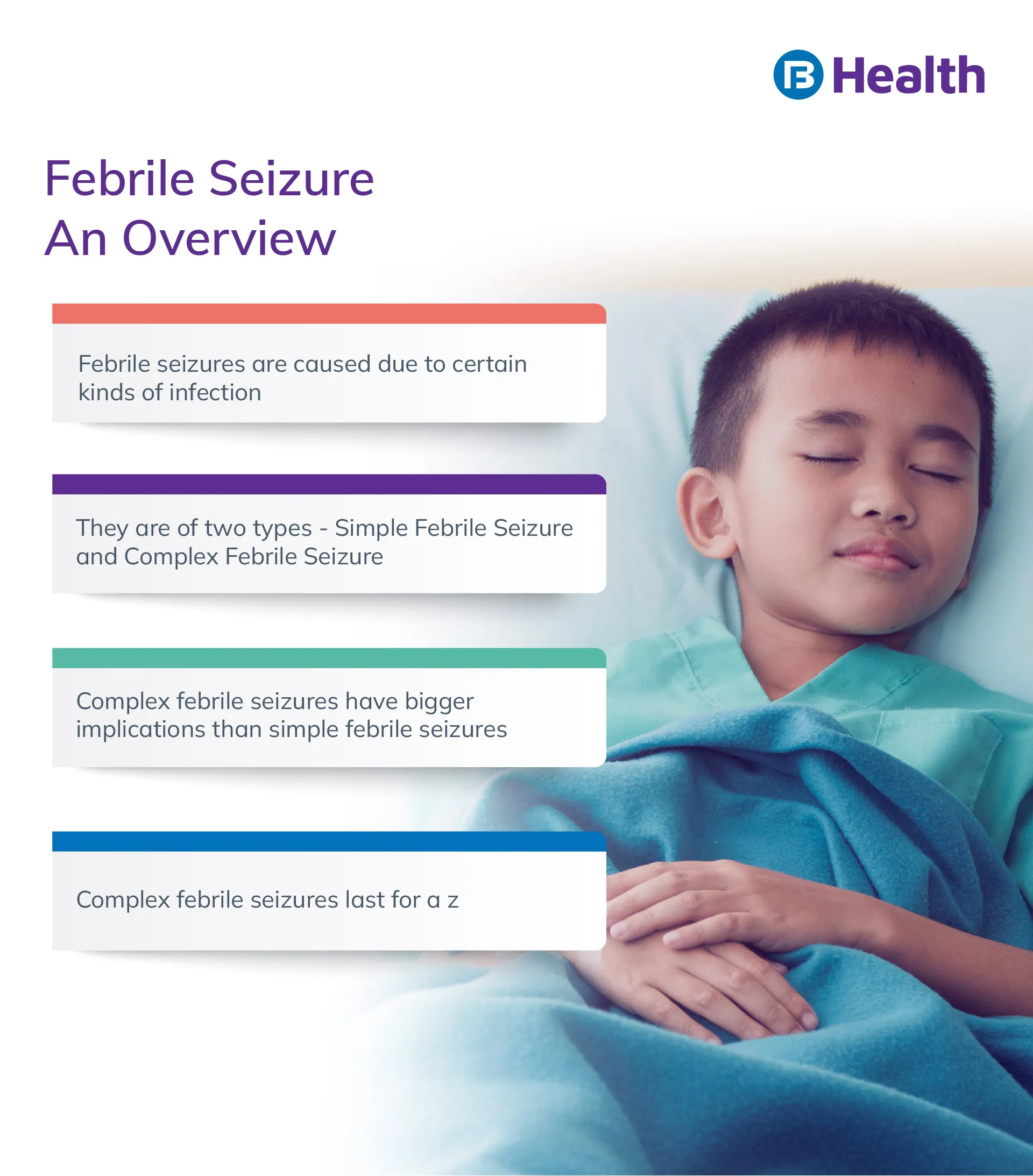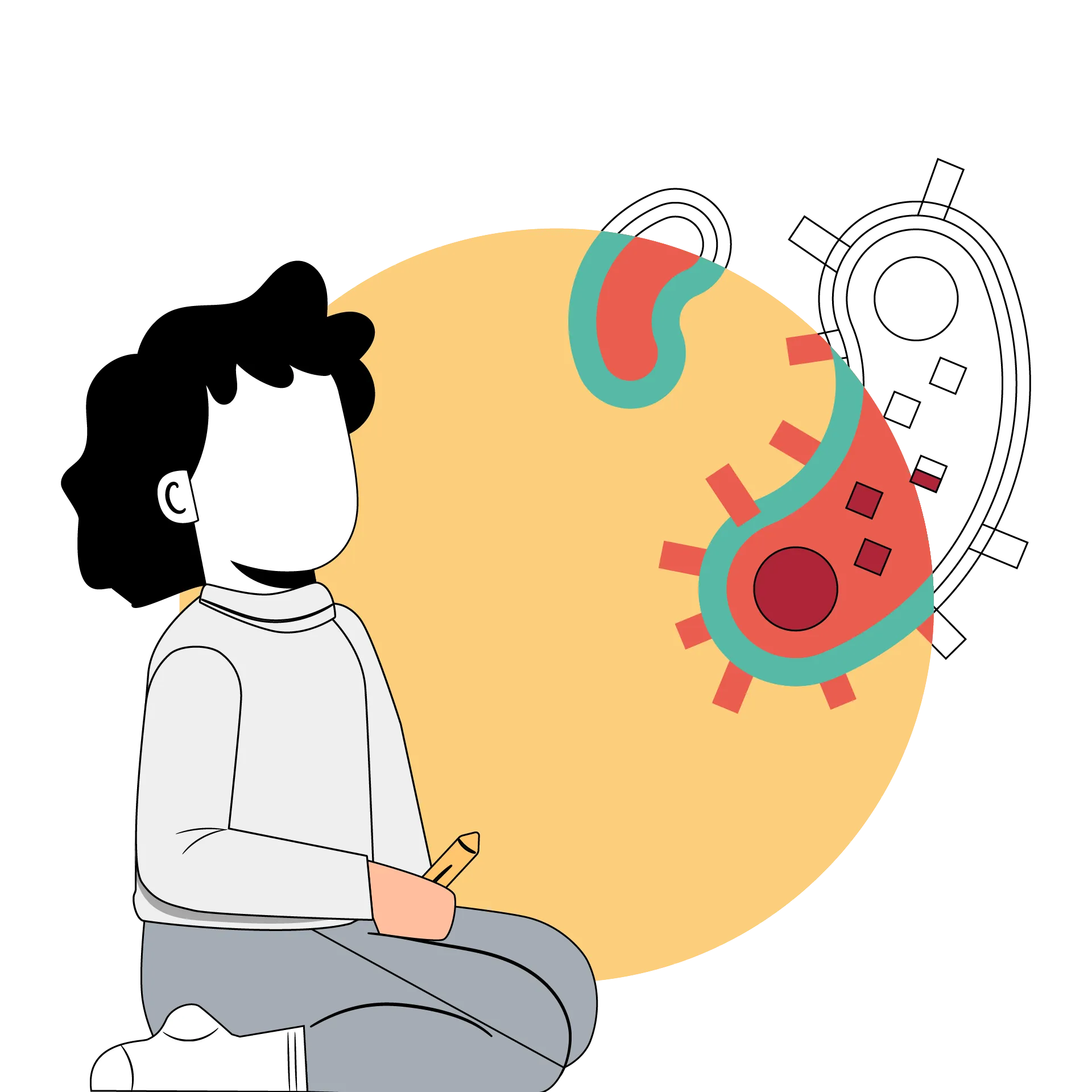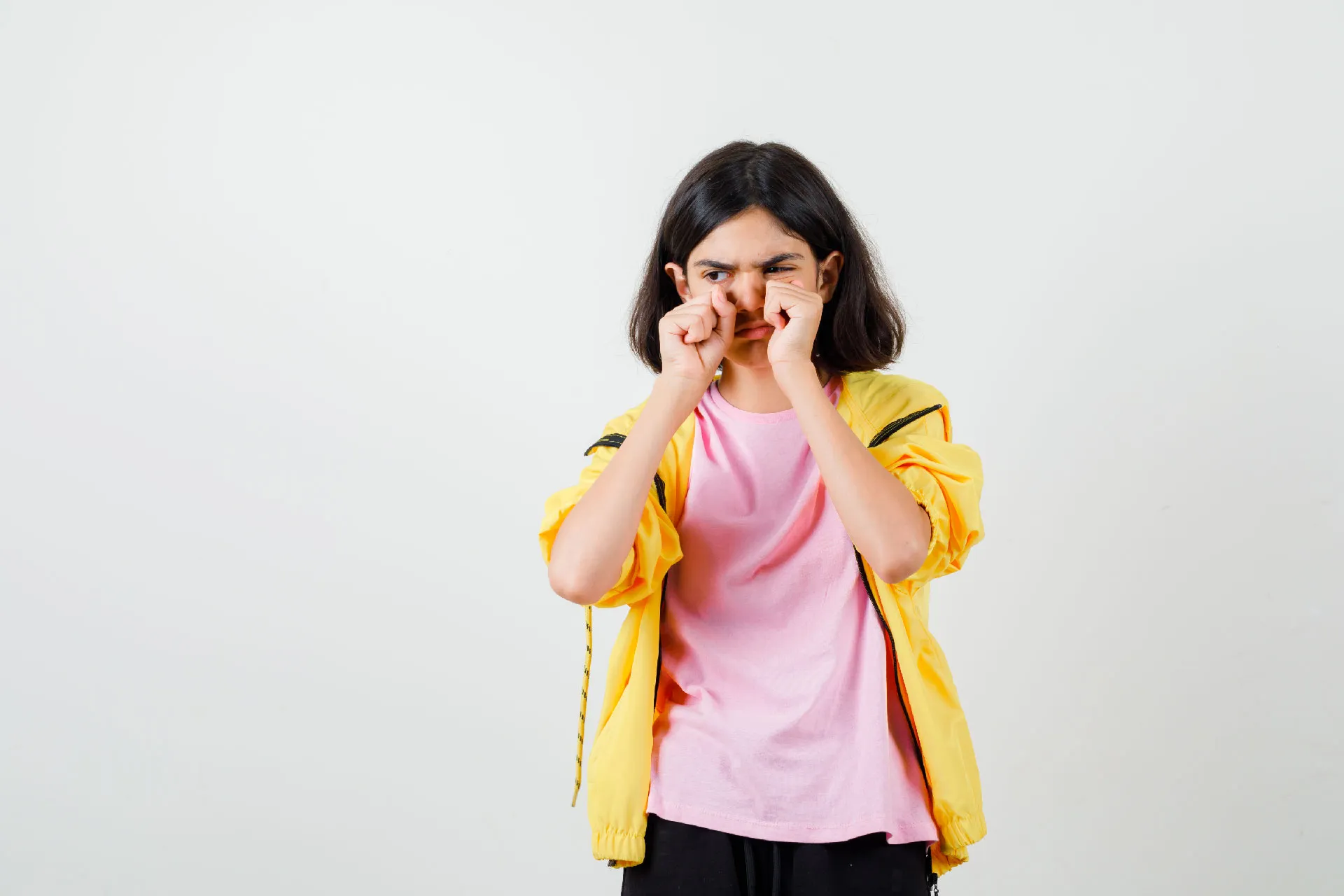Paediatrician | 8 min read
Febrile Seizure: Symptoms, Causes and Risk Factor
Medically reviewed by
Table of Content
Synopsis
Febrile seizure is caused due to certain infections and is of two types. The symptoms and treatment differ according to the types. Learn more about this.
Key Takeaways
- Febrile seizures are fits that children between 12-18 months experience in state of high fever
- Febrile seizures are usually of two types: Simple and Complex
- febrile seizures recurring are very common and can be prevented by taking a few precautions
Children between the ages of six months to six years often face a relatively less known disease. This disease is known as febrile seizure. It is a fit or an episode that continues for a few minutes and about fifteen minutes for others. It is mostly seen in children ranging from twelve to eighteen months old. Parents are bound to get scared if they see their child undergo febrile seizures. But, this is not epilepsy. Long-lived fits do not cause damage to the child's brain. Hence, even a short-lived fit will not cause any damage to the brain. Instead of panicking, parents need to properly assess the situation and work accordingly. Studies predict that around thirty percent of children with febrile seizures are bound to have another during their lifetime. [1] But, it is not known when they will have.
Additional Read: Height Weight Age Chart For KidsCauses of Febrile Seizure
This kind of Seizure is caused due to fever or a temperature rise. It is most prevalent on the first day of the illness. As the child's temperature increases, the chances of a seizure increase. It is observed that the patients or children have had a temperature of about 100.4 degrees Fahrenheit or 38 degrees Celsius [2]. But febrile seizure causes cannot always be linked to fever. Some children had shown symptoms even before fever was detected. This fever is generally caused due to an infection or a germ entering the body. In extremely low cases, though, a febrile seizure occurs due to vaccination.
The reasons why there is a rise in the temperature of the human body are:
- Chickenpox: Also known as varicella-zoster, it produces a dangerous red rash on the human body. It is very highly contagious.
- Meningitis: This disease is an inflammation of the protective layer surrounding the brain and spinal cord. Viruses, fungi, bacteria, and parasites can be the causes of meningitis. It results in the rise of temperature.
- Upper Respiratory Infections: This affects the upper respiratory portion, including our sinuses and throat. A running nose, cough, and fever are characteristics of upper respiratory infections.
- Encephalitis
- Influenza
- Tonsillitis
- Malaria
- Coronavirus
- Stomach flu
- Malaria
Risk Factors of Febrile Seizure
Children who have had febrile seizures once have a higher probability of having a febrile seizure again. The chances and risk of a child having a febrile seizure again are 1 in 3. About 10 percent of children who have one febrile Seizure have the chance of having three or more in their lifetime. Although the cost involved in treating this is nowhere as high as childhood cancer, parents could always keep a tab on their savings. The highest chance of contracting this again is in children who have had it before turning one.
Additional Read: International Childhood Cancer Day
Types of Febrile Seizure
Febrile Seizure is of two types:-
- Simple febrile seizures: They tend to have the following characteristics:
- Affects Both Sides of the Child's Body: Any seizure, which is affecting both sides of the child's body, is simple and generalized. The Seizure does not occur at any local position and is not localized in character or nature.
- Short-lived: This kind of Seizure does not last for a long time. It is a maximum of fifteen minutes.
- Isolated Events: This happens at large intervals or gaps. A child does not have a febrile convulsion within twenty-four hours of having one.
- Complex febrile seizures: This kind of febrile convulsion does not have any of the characteristics of a simple febrile convulsion. It is advisable to talk to a pediatrician if you have a complex febrile convulsion. This febrile convulsion generally affects a local organ, not the entire body. It is not short-lived like the simple febrile convulsion. It can occur for more than fifteen minutes. Simple febrile seizures do not occur within a gap of twenty-four hours, but a complex febrile convulsion can occur within twenty-four hours.
Symptoms of Febrile Seizure
Febrile Seizure symptoms are as follows:-
- The child would have a loss of consciousness or a blackout. The parents shouldn't panic at this time. At times, even their eyes roll back. It is not compulsory, though, that the child will have bouts of shaking before losing consciousness.
- Most children record a temperature above 100.4 degrees Fahrenheit.
- They start facing difficulty in breathing.
- They become stiff. There is a sudden and involuntary twitching and jerking of arms and legs.
- Some children have foam formation at the corner of their mouths. The child loses control of their body, and they start urinating, peeing, vomiting, or in certain cases, there is foam formation.
- There is rapid eye rolling movement, such that only the whites of the eye are visible after a certain point.
- It is a very rare symptom, but for certain children, their skin becomes pale or bluish.
- After a febrile seizure, the child may take around ten to fifteen minutes to wake up and recognize the known faces around them. Initially, the child may be irritable towards you and find it difficult to recognize known faces.
- A child who is having febrile convulsion loses all kinds of control over their body and muscle movement. Depending on the kind of Seizure they are experiencing, they lose control over one or both sides of their body. This is followed by shaking, stiffening, or loosening the body.

Recurring Febrile Seizure
One in three children tends to have a febrile convulsion in a short period if they catch a short infection period. This febrile Seizure can occur within a year of the first one happening. (3) Some of the reasons for this happening are:-
- The first febrile convulsion occurred to the child before they turned eighteen months old.
- If one looks into the child's family history, it may be found that there is a history of febrile convulsion in the family.
- When the child had their first febrile Seizure, the fever lasted less than an hour. And the temperature recorded was less than forty degrees Celsius.
- In certain cases, the recurrence can be due to the child's previous complex febrile convulsions. It is not proven that having simple febrile convulsions decreases the chances of recurrent febrile convulsions.
- The child is at high risk of developing other infections like chickenpox.
It is advisable for parents to have the right child health insurance, as, at times, there may be a good amount of cost involved in the treatment. However, it is impossible to control febrile seizures by consuming medicines that bring down the temperature. But, in certain exceptional circumstances, where the child is having regular seizures, they might be prescribed medicines like diazepam or lorazepam to consume at the beginning of the fever.
Treatment of Febrile Seizure
There is no framework for febrile seizure treatment that exists. But, a few precautionary measures and steps can be taken. Those are mentioned below.
Simple febrile seizures do not require any kind of treatment. They do not last for more than a few minutes and, thus, do not have any medication of any kind. Children recover from it quite fast as well. Parents, though, can give certain medicines which bring down the temperature. Medicines like acetaminophen or Tylenol and ibuprofen or Motrin should be given. They do not reduce the chances of a future febrile seizure, but they bring down the temperature and relieve the child.
When a child has a febrile convulsion for the first time, they are not near a doctor. So, parents have to take note of several things like:-
- Time: The parents need to take note of the interval of time for which the seizure lasted. This will help the doctors in diagnosing the kind of Seizure later on. They should also see if their child recovered within one hour.
- Being Calm: It is natural for a parent to be scared if they see their child experiencing a febrile seizure. But, they should stay calm and try to look into their child's condition.
- Symptoms: The parents of the child also have to check on the symptoms that the child had while going through a seizure. Whether they lost consciousness or had twitching in their arms and legs – this will help the doctor diagnose the disease.
- Placing them in a Comfortable Position: Parents should put their children on the left side, with their lower arms stretched out. This arm will be like a cushion to their head. This shall help the child to not have the fluid, saliva, or vomit going into their lungs. It is advisable not to put the child on an elevated surface like a table or even take them up in arms.
- No Consumption: You should not make your child eat anything when they have a febrile seizure.
It becomes easier for a doctor to diagnose the Seizure after looking into these symptoms and going through the height weight age chart for kids.
For those who have complex febrile Seizures, the treatment procedure is complex. Several other medical procedures and tests may be required, like an EEG or lumbar puncture. Rectal diazepam may also be prescribed.
Parents need to remain calm during a febrile seizure. Even if it is a complex febrile convulsion, the child's chances of epilepsy are very rare. But, if parents want, they can look into online doctor consultations from Bajaj Finserv Health to understand the situation better.
References
- https://www.nhs.uk/conditions/febrile-seizures/#:~:text=Febrile%20seizures%20(febrile%20convulsions)%20are,if%20it's%20their%20first%20seizure.
- https://www.nhs.uk/conditions/febrile-seizures/#:~:text=Febrile%20seizures%20(febrile%20convulsions)%20are,if%20it's%20their%20first%20seizure.
Disclaimer
Please note that this article is solely meant for informational purposes and Bajaj Finserv Health Limited (“BFHL”) does not shoulder any responsibility of the views/advice/information expressed/given by the writer/reviewer/originator. This article should not be considered as a substitute for any medical advice, diagnosis or treatment. Always consult with your trusted physician/qualified healthcare professional to evaluate your medical condition. The above article has been reviewed by a qualified doctor and BFHL is not responsible for any damages for any information or services provided by any third party.





